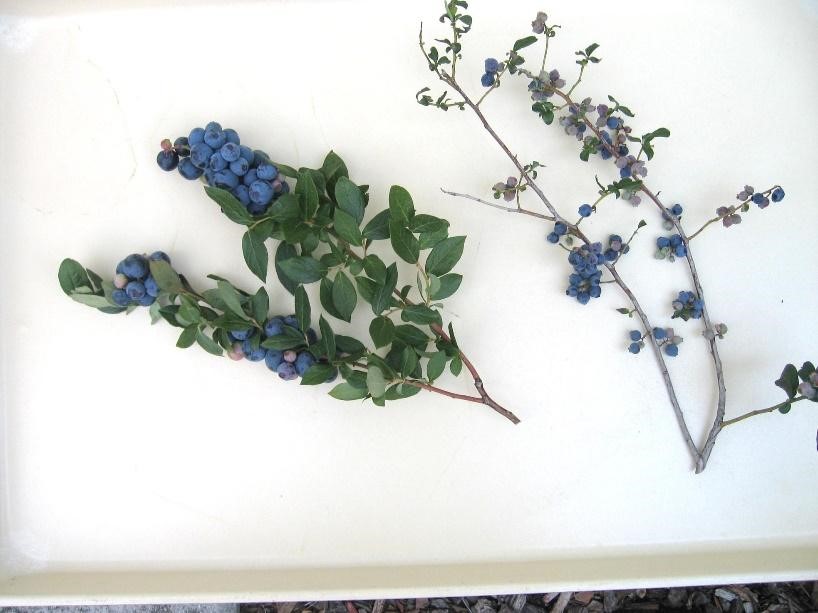February is the Time for Pruning Blueberries
go.ncsu.edu/readext?776088
en Español / em Português
El inglés es el idioma de control de esta página. En la medida en que haya algún conflicto entre la traducción al inglés y la traducción, el inglés prevalece.
Al hacer clic en el enlace de traducción se activa un servicio de traducción gratuito para convertir la página al español. Al igual que con cualquier traducción por Internet, la conversión no es sensible al contexto y puede que no traduzca el texto en su significado original. NC State Extension no garantiza la exactitud del texto traducido. Por favor, tenga en cuenta que algunas aplicaciones y/o servicios pueden no funcionar como se espera cuando se traducen.
Português
Inglês é o idioma de controle desta página. Na medida que haja algum conflito entre o texto original em Inglês e a tradução, o Inglês prevalece.
Ao clicar no link de tradução, um serviço gratuito de tradução será ativado para converter a página para o Português. Como em qualquer tradução pela internet, a conversão não é sensivel ao contexto e pode não ocorrer a tradução para o significado orginal. O serviço de Extensão da Carolina do Norte (NC State Extension) não garante a exatidão do texto traduzido. Por favor, observe que algumas funções ou serviços podem não funcionar como esperado após a tradução.
English
English is the controlling language of this page. To the extent there is any conflict between the English text and the translation, English controls.
Clicking on the translation link activates a free translation service to convert the page to Spanish. As with any Internet translation, the conversion is not context-sensitive and may not translate the text to its original meaning. NC State Extension does not guarantee the accuracy of the translated text. Please note that some applications and/or services may not function as expected when translated.
Collapse ▲Blueberries are a great plant to have in the home garden. Not only are blueberries great for their tasty fruit during the summer months, but they can make a nice hedge or screen in the landscape. Besides fruit in the summer, blueberries have attractive white or pink flowers in the spring and wonderful red to yellow foliage in the fall. Now that we are in late winter with spring just around the corner, it is time to prune blueberry bushes before the new growth begins.
When pruning blueberry bushes, you should prune so the bush has a narrow base and is open in the center. While pruning, remember to take a step back occasionally to make visual observations of the plant to avoid getting too carried away while pruning. Most of the smaller stems and canes can be pruned with hand pruners, while for your larger sized stems you will need to use a pair of loppers or a pruning saw.
Of course the main objective when pruning blueberry bushes is to increase fruit production. The first step that should be taken when you begin pruning is to take out any dead canes. These canes are not producing any fruit and provide a great location for pests to enter into the plant. Dead or dying stems will be light gray in color, while healthy, living stems will be brown in color.
Over time blueberry bushes will form many root suckers, which are stems that come out of the ground from the roots. On mature bushes, many of these root suckers will be away from the center of the bush. You want to prune out these root suckers, especially the ones that are away from the base of the plant. It is okay and maybe even desirable to keep a few root suckers that have come up within the base of the bushes. The root suckers within the base of the plant will be new growth that will replace older canes over time.
The center of the blueberry bush should be thinned to allow for sunlight and good air circulation throughout the plant. Remove older canes that will help open up the center of the bush. Along with thinning the bush, be sure to prune out any stems that are touching or crossing each other. When selecting what to keep or prune out, keep in mind that thin, twiggy or “matchstick” wood will result in small berries. Keep pencil size or larger wood to have larger blueberries.

The healthy, pencil-size or larger fruiting wood on the left will result in larger blueberries versus “matchstick” twiggy wood resulting in smaller berries.
You want to prune out any shoots that you think would touch the ground when loaded with fruit in the summer. Do not be concerned about removing too many flower buds when pruning. Pruning will be helpful in thinning out some flower buds so you will have larger fruit and the canes will be able to withstand the weight of the fruit.
Annual pruning of blueberry bushes is a practice that will not only increase fruit size and yield but will also keep your plants in good health and productive for years to come.
Jessica Strickland is an Agriculture Extension Agent, specializing in horticulture for North Carolina Cooperative Extension in Wayne County.
Learn More!
- Sign up for the Wayne County Extension Gardening email list to receive timely gardening tips.
- Follow us on Facebook and Instagram.
- Visit the North Carolina Extension Gardener Plant Toolbox to discover more plant ideas for your garden.




